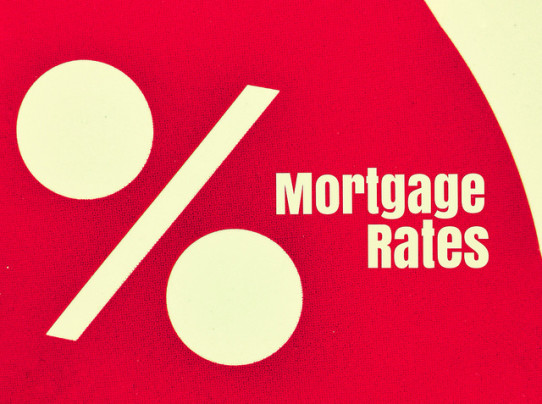There are few real-estate truisms better known than the one about spring being the best time to sell a house. The reason it’s so widely known is that it is, for the most part, totally true. For a multitude of reasons, the housing market does heat up every spring. But does that automatically mean it slows down every winter, as is commonly assumed? Well, according to one study, no. In fact, an analysis found that, not only wasn’t winter the slowest time of the year, it was the next best thing to selling in spring. For example, among homes listed in spring, 18.7 percent sold for more than their asking price. In winter, 17.5 percent sold above asking. Additionally, 46.2 percent of homes listed in winter sold within 30 days – just 1.8 percent fewer than did in spring. So what accounts for winter’s unexpected popularity? Well, weather doesn’t seem to have anything to do with it. The analysis found the statistics pretty consistent from coast to coast – whether they looked at sunny California or snow belt states like Michigan. It may just be that buyers at that time of year are more motivated to move quickly and, since there are fewer sellers listing in winter, there is less competition for their attention. Whatever the reason, it may be time to reconsider your seasonal assumptions about the real-estate market. More here.
Archive for December 2016
Rising Mortgage Rates Still Low Historically
According to the Mortgage Bankers Association’s Weekly Applications Survey, average mortgage rates rose again last week. Rates moved up for all loan types except those backed by the Federal Housing Administration. Still, despite steadily increasing over the past month, mortgage rates remain low by historical standards. In fact, since 1980, mortgage rates have been as high as 18 percent – though they spent most of the past 40 years somewhere between 7 and 10 percent. In other words, mortgage rates are up from their all-time lows but remain far lower than they’ve typically been. The increases, however, have had an impact on refinance activity, which is more sensitive to rate fluctuations. “Refinances are almost entirely driven by mortgage rates, while purchase activity is a function of a broader set of variables including the state of the job market, demographics, and consumer confidence,” Michael Fratantoni, chief economist for the MBA, told CNBC. As proof, Fratantoni points to the fact that purchase application demand has actually risen 12 percent over the past month, while the group’s refinance index has fallen over the same period. The MBA’s weekly survey has been conducted since 1990 and covers 75 percent of all retail residential mortgage applications. More here.
Smart Home Technology Beginning To Catch On
Though still new to most homeowners and buyers, smart home technology is starting to catch on. These days, you can find everything from smart thermostats to locks and light bulbs that use an Internet connection to allow you to control them from your phone or computer. These devices and home automation systems can add convenience, security, and energy efficiency to your home – in addition to the novelty of being able to dim all the lights in your house at once. Still, despite their seeming inevitability, a new report from the National Association of Realtors found that only 15 percent of real estate agents say they’re getting questions about the technology from their clients. That, however, is likely due to the products’ newness rather than their popularity. “More homeowners are adopting smart-home technology and that will likely impact buyers’ purchase decisions in the future,” NAR president, William E. Brown, says. “While consumer interest in this trend is still developing, Realtors are becoming well-versed in successfully marketing smart homes and their features, such as devices and appliances.” As home buyers become more aware of what’s possible, they will almost certainly add smart home features to their must-have list. More here.
How Life’s Milestones Affect The Housing Market
Some housing market trends are driven by economic factors, while others are driven by our lives. The job market, economic conditions, and wages can all affect whether or not we decide it’s a good time to buy or sell a house but, most often, that decision is made based on what is happening in our lives. Things like retirement or having a child are much more likely to influence a decision to move than the ups-and-downs of the market. Because of this, Realtor.com’s forecast for 2017 looks at some of the demographic changes that may affect the real estate market next year and beyond. Specifically, their forecast singles out baby boomers and millennials as two groups who will have a big impact. That’s because both are entering periods of their life when people typically change homes. Millennials because they are reaching the age when Americans typically buy their first home and baby boomers because they are at an age when their children have moved out and they may be looking to downsize or retire. When and where these groups decide to settle will help shape the real estate market next year and in the years to come. More here.
What 1st-Time Home Buyers Need To Know Now
It’s normal to feel a little bit of stress when buying a house. Whether it’s financial worry or just the logistics of moving all of your belongings to a new home, there’s a lot to think about and plan for. This is especially true for first-time home buyers. That’s because first timers have never navigated their way through the home buying process before and may be feeling some added fear, confusion, and concern about handling the responsibilities of homeownership. So what should younger buyers be watching for if they’re planning on buying a home soon? Well, according to Fannie Mae’s chief economist, Doug Duncan, mortgage rates and inventory will be key to determining whether or not there are enough affordable, entry-level homes available for new buyers next year. “Demand from first-time buyers has increased with household formation and is outpacing supply, leading to significant price increases and affordability challenges for entry-level buyers,” Duncan said in Fannie Mae’s most recent Economic & Housing Outlook. “Home purchase affordability will be constrained further if the recent pickup in mortgage rates persists, which would present a downside risk to our forecast of housing and mortgage activity.” In other words, if mortgage rates continue rising and inventory remains low, first-time buyers should expect higher prices and more competition in the year ahead. More here.
Contract Signings Inch Forward In October
The National Association Of Realtors’ Pending Home Sales Index measures the number of contracts to buy homes that are signed each month. Because it tracks contracts, and not closings, it is a good indicator of future sales of previously owned homes. In October, the index saw a 0.1 percent gain over the month before and is now 1.8 percent higher than the same time last year. Lawrence Yun, NAR’s chief economist, says pending sales are at their highest level since July. “Most of the country last month saw at least a small increase in contract singings and more notably, activity in all four major regions is up from a year ago,” Yun said. “Despite limited listings and steadfast price growth that’s now carried into the fall, buyer demand has remained strong because of the consistently reliable job creation in a majority of metro areas.” But Yun believes affordability conditions will begin to suffer in the months ahead if there isn’t an increase in the number of homes available for sale. With mortgage rates rising and inventory low, buyers could begin to feel the effects, especially in markets where prices have already largely recovered. More here.
Mortgage Rates Increased Again Last Week
According to the Mortgage Bankers Association’s Weekly Applications Survey, average mortgage rates were up again last week across all loan categories, including 30-year fixed-rate loans with both conforming and jumbo balances, loans backed by the Federal Housing Administration, and 15-year fixed-rate loans. The increase brought rates to their highest level in over a year. As a result, refinance demand fell sharply. In fact, refinance activity was down 16 percent from the week before. Demand for loans to buy homes, on the other hand, was relatively flat – though the trend toward higher-balance loans may be an indication that younger buyers are being deterred by rising rates. “The mix continues to shift towards higher balance loans, as the average purchase loan size reached a new survey record,” Michael Fratantoni, MBA’s chief economist, told CNBC. “First-time buyers and buyers of lower priced units may have stepped away from the market to some extent given the jump in rates.” The week’s results include an adjustment for the Thanksgiving holiday. The MBA’s weekly survey has been conducted since 1990 and covers 75 percent of all retail residential mortgage applications. More here.







